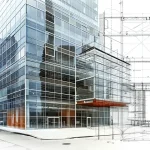In the ever-evolving world of architecture, how we present our work has seen a significant shift. Gone are the days when a physical portfolio was the only way to showcase our talent. Today, digital portfolios offer a dynamic and flexible alternative, but how do they stack up against their physical counterparts?
Physical portfolios, though traditional, provide a tangible experience that can leave a lasting impression. However, they can be costly, heavy, and difficult to update. On the other hand, digital portfolios are easily accessible and can be modified with just a few clicks, making them a practical choice for many architects.
As we navigate this digital age, it’s crucial to weigh the pros and cons of both formats to determine which best suits our needs and the expectations of our clients. Let’s delve into the benefits and drawbacks of digital vs. physical architectural portfolios.

Overview of Architectural Portfolios
Purpose and Importance in the Industry
Architectural portfolios serve as a visual resume for architects, offering a curated showcase of their expertise and creativity. They are essential tools for job applications, client presentations, and professional competitions. These portfolios provide a tangible reference for skills, past projects, and design philosophy. Whether digital or physical, the portfolio’s primary goal is to leave a lasting impression on its audience, setting the architect apart in a competitive industry.
Variety and Accessibility
Digital portfolios can be hosted on personal websites, shared via cloud services, or presented as PDFs or PowerPoint files. This flexibility allows architects to customize their portfolios for specific audiences or purposes. A key advantage is the ease of access; clients and employers can view the portfolio from anywhere with an internet connection. High-resolution digital copies enable zoom functionality, enhancing the viewing experience. Physical portfolios, by contrast, come in binders with sleeves for project inserts, providing a tactile experience that digital formats cannot replicate.
Form and Presentation
Digital portfolios come in various forms, including interactive slideshows, dynamic web pages, and downloadable files. These formats offer limitless opportunities for creativity, allowing for multimedia elements such as videos and interactive features. High-quality digital portfolios ensure images can be scaled without losing clarity, delivering an exceptional viewing experience. Physical portfolios typically follow a traditional format with a professional outer cover and removable sleeves for easy updating. However, they lack the flexibility of digital portfolios in terms of design and interactivity.
Costs and Maintenance
Digital portfolios generally incur lower initial costs but may involve recurring expenses like subscription fees for web hosting or design software. Over time, these costs can accumulate, potentially exceeding the one-time expense of creating a physical portfolio. Maintaining a physical portfolio involves higher upfront costs for materials and printing but has minimal recurring expenses. Durability is a factor, with physical copies being susceptible to wear and tear, while digital portfolios require data backups to prevent loss.
Flexibility and Adaptation
Maintaining both digital and physical portfolios allows architects to adapt to various situations. Digital portfolios can be quickly updated and shared online, suitable for remote interactions and large audiences. Physical portfolios, on the other hand, offer a tactile experience ideal for face-to-face meetings, providing a sense of craftsmanship and professionalism. Strategically using both types of portfolios ensures that architects are prepared for any presentation scenario, maximizing their chances of success in different contexts.

Pros of Digital Architectural Portfolios
Ease of Access and Sharing
Digital portfolios offer unparalleled ease of access and sharing. They can be viewed by anyone, anywhere, at any time, significantly increasing our visibility. A simple link can be sent via email, social media, or professional networks, making it convenient for potential clients or employers to access our work instantly. This immediacy is particularly valuable in time-sensitive situations, such as job applications or project pitches, where fast access to our portfolio can make a significant difference.
Cost-Effective Updates and Maintenance
Maintaining and updating digital portfolios is cost-effective. With no printing costs, alterations and additions can be made swiftly and inexpensively. This flexibility allows us to keep our portfolio current, incorporating new projects and improvements without the delay and expense associated with physical copies. The ability to update our work regularly helps ensure that the portfolio always reflects our latest skills and achievements, thereby enhancing our professional appeal.
Broad Reach and Customization Options
Digital portfolios offer a broad reach and extensive customization options. They can be tailored to fit various formats, including websites, PDFs, and multimedia presentations, allowing us to present our work in the most engaging and suitable manner. The inclusion of videos, 3D models, and interactive elements provides a richer, more dynamic presentation, capturing the full essence of our projects. This adaptability can attract a global audience, expanding our potential client base and networking opportunities.
Cons of Digital Architectural Portfolios
Dependence on Technology
Digital portfolios depend on reliable technology. If technology fails, a digital portfolio may become inaccessible. Presentations can be disrupted by internet outages, device malfunctions, or software glitches. There is always a risk of incompatibility issues when accessing files on different devices or platforms. High-resolution files can require significant storage, which can also pose a problem.
Security and Privacy Concerns
Maintaining a digital portfolio involves managing security and privacy risks. Portfolios hosted online can be vulnerable to cyber-attacks, leading to unauthorized access or data breaches. Architects must ensure sensitive information remains protected, which often necessitates robust cybersecurity measures. Sharing portfolio links can inadvertently expose work to a broader audience than intended, risking intellectual property. Measures like encryption and secure logins can help, but they don’t eliminate these risks completely.

Pros of Physical Architectural Portfolios
Tangible Presentation Quality
Physical architectural portfolios provide a sensory experience unmatched by digital versions. High-quality prints of drawings, photographs, and models offer a level of detail and texture that digital screens can’t replicate. The tactile sensation of flipping through pages can create a profound connection with the work. Printed portfolios also allow for the inclusion of physical materials, like fabric swatches or model samples, which add to the presentation’s depth and realism.
Controlled Viewing Experience
Physical portfolios offer a significant advantage in controlling the viewing experience. When presenting our portfolio in person, we guide the viewer through the story we’re telling. This controlled flow ensures that we highlight the most critical projects at the right moments, maintaining engagement. We also avoid the potential pitfalls of technology failure that can disrupt digital presentations. A physical portfolio ensures our work is viewed exactly as intended, without the risk of screen resolution issues or software glitches.
Cons of Physical Architectural Portfolios
High Production Costs
Producing a physical architectural portfolio isn’t cheap. High-quality paper, ink, and binding materials add up quickly, especially if multiple copies are necessary. Custom printing services can further raise expenses, making this option less feasible for those on a tight budget. Additionally, any updates or changes require reprinting the entire portfolio, leading to repeated costs and time investments.
Limited Distribution and Accessibility
Physical portfolios are cumbersome and lack the easy distribution of their digital counterparts. Sharing them globally isn’t practical, limiting their reach to in-person meetings or mail. Moreover, carrying multiple copies can be logistically challenging, especially when travelling to different client locations. Real-world viewing constraints hinder the viewer’s ability to zoom in or manipulate the content, which is possible with digital portfolios.
Deciding Between Digital and Physical Portfolios
Factors to Consider Based on Career Stage and Goals
Our career stage and goals play a significant role in choosing between digital and physical portfolios. For students and recent graduates, digital portfolios offer the flexibility and ease of sharing their work with potential employers globally. They can quickly adapt and update their portfolios as they gain more experience and skills.
For mid-career professionals, combining both digital and physical portfolios can be beneficial. Digital versions offer convenience for quick sharing, while physical versions provide a tangible representation of their most significant projects during in-person meetings.
Established professionals might prefer physical portfolios for their authenticity and tactile engagement during exclusive client meetings, where personal touch matters. However, having a digital version ready for broader reach ensures they don’t miss out on opportunities in the digital age.
Evaluating our career stage and aligning it with our goals helps us determine the most effective portfolio format for showcasing our skills and achievements.

Conclusion
Balancing the benefits of digital and physical architectural portfolios proves essential when showcasing our skills and achievements. Both formats offer unique advantages that cater to different needs and circumstances in our professional journey.
Pros of Digital Portfolios
- Accessibility: Digital portfolios can be shared instantly worldwide. This enables us to reach potential clients and employers without geographical limitations.
- Customization: They allow us to update and modify content easily. Adding new projects, adjusting old ones, and incorporating multimedia elements like videos, 3D models, or interactive walkthroughs enhance the presentation.
- Cost-Effective: Creating and maintaining a digital portfolio usually costs less. We save on printing and material costs, making it more budget-friendly.
Cons of Digital Portfolios
- Technical Issues: Relying on technology means potential problems with software, devices, or internet connectivity. These issues can interrupt our presentation or prevent access to our work.
- Less tactile: Digital mediums can’t replicate the physical feel of materials. This may impact how our work is perceived in interviews or meetings where hands-on interaction is crucial.
- Impersonal: A screen-based presentation might come off as less personal compared to a physical portfolio, which can create a stronger emotional connection.
Pros of Physical Portfolios
- Sensory Experience: Physical portfolios offer a tactile element. High-quality prints and textures provide a tangible sense of our design work, which can be compelling in face-to-face meetings.
- No Technical Constraints: We avoid technology issues. There’s no need to worry about software malfunctions, screen brightness, or internet availability, ensuring a smooth presentation.
- Professionalism: Presenting a well-crafted physical portfolio can enhance our professional image. It shows dedication and attention to detail.
- Practical Limitations: Physical portfolios are susceptible to damage from weather, mishandling, or just the passage of time. Rain, crumpled pages, or lost documents can negatively impact our presentations.
- Inflexibility: Updating a physical portfolio requires reprinting and manual assembly of new content. This makes them less adaptable to frequent updates or last-minute changes.
- Global Reach: Physical portfolios are harder to share globally. Shipping costs and time constraints limit their dissemination compared to instant digital sharing.
- advantages of digital portfolios
- architect portfolio comparison
- Architectural Portfolio Design
- Architecture Portfolio Tips
- best architectural portfolio format
- design portfolio presentation
- digital architectural portfolios
- digital portfolio tools
- digital vs physical portfolios
- disadvantages of physical portfolios
- how to create a digital architecture portfolio
- online architecture portfolio platforms
- physical architectural portfolios
- printing architectural portfolios
- pros and cons of digital portfolios
- pros and cons of physical portfolios
















Leave a comment